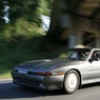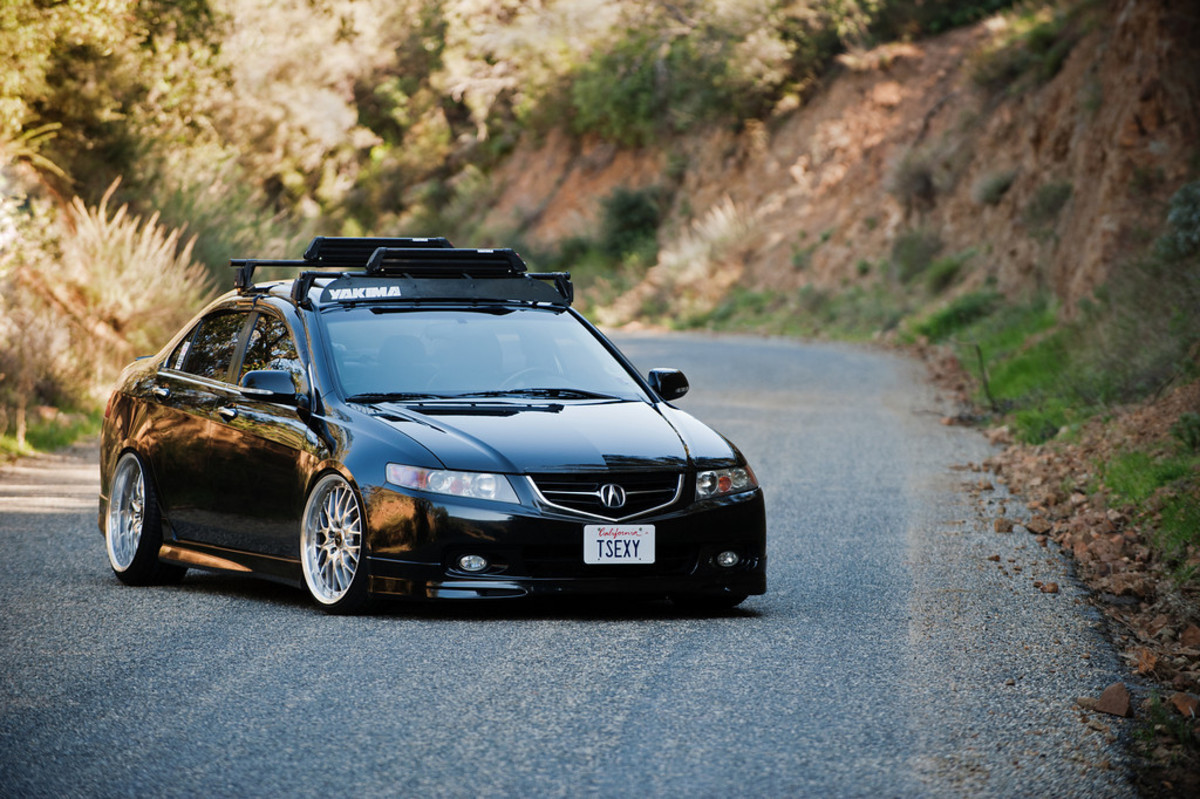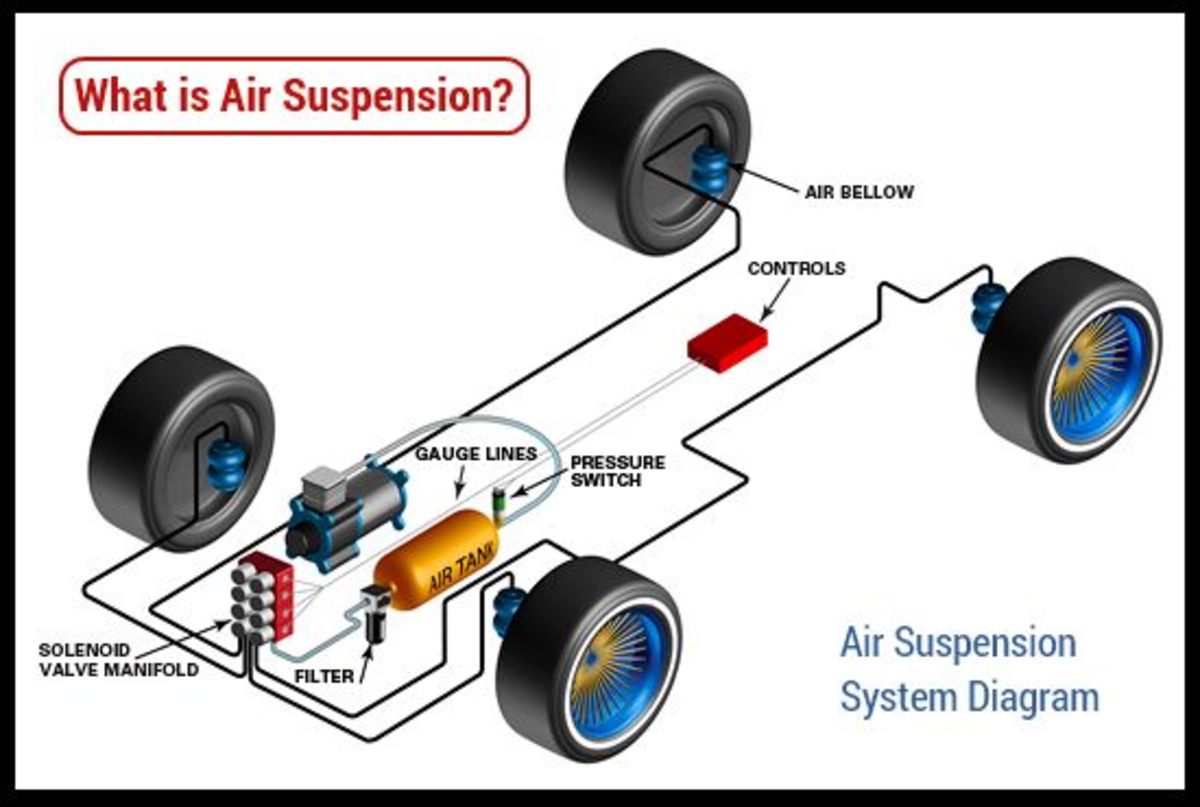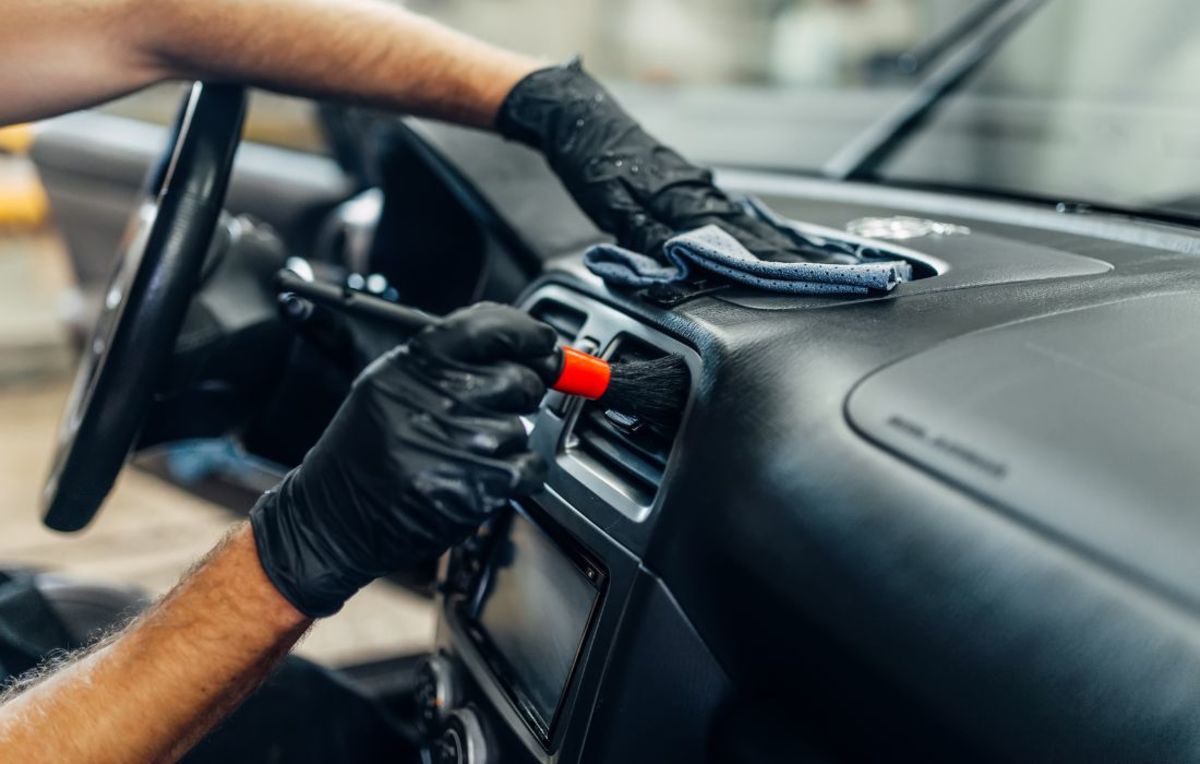Choosing custom aftermarket wheels for your car
Aftermarket wheels
Aftermarket wheels, or rims, for cars, trucks, and SUVs are becoming more and more popular. Custom wheels can give your vehicle a personalized, unique look and are extremely easy to install and require no special maintainence or modifications to your ride. Lightweight wheels can also provide multiple performance benefits, such as quicker suspension response, faster acceleration, and brake cooling. A wider wheel can also increase your car's handling by widening the contact patch of the tires, or changing the sidewall height to reduce flex while turning or allow tire "wrinkle" or give (and additional traction) when launching from a stop.
Corvette with aftermarket wheels
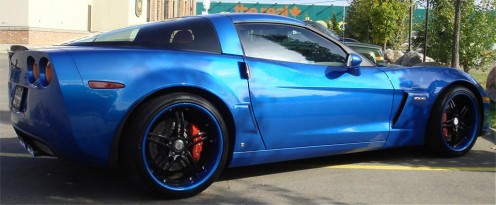
Choosing the right wheels
Choosing the right aftermarket wheels for your car is very important. Ill-fitting wheels can easily decrease the performance of your automobile or actually pose a safety threat to you and others on the road. Follow these guidelines and you'll be sure to find wheels that look amazing and fit your car perfectly!
Modified Saab with aftermarket wheels
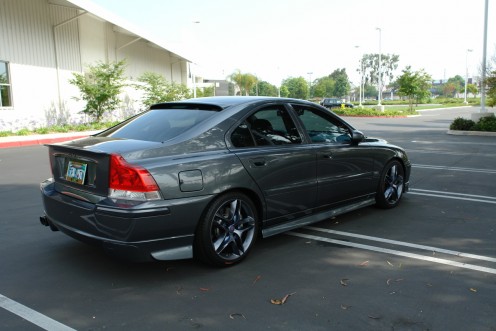
Lug bolt pattern
The first thing you need to know is your vehicle's lug nut bolt pattern. This is simply the number and positions of the studs that hold the wheels on your car in place. Your owner's manual will usually provide this information, and most stores that deal with aftermarket wheels for cars will have databases to look up your bolt pattern. Standard bolt patterns are measured in millimeters with the number of lugs first and the distance from one lug stud to another second: ex, 5x114.3 means the wheel hub has five lugs, with a distance of 114.3mm between lugs.
Bolt pattern measurement guide
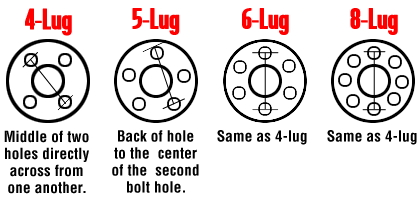
Bolt pattern guide by manufacturer
A general guide to common bolt patterns by manufacturer:
Ford/Mazda: 5x114.3 mm, 4x100mm
GM (Chevy, Pontiac, etc): 5x115 mm, 5x120.7 mm
Dodge: 5x100 mm, 5x115mm
Honda/Acura: 5x114.3 mm, 4x100 mm, 4x114.3 mm
Toyota/Lexus/Scion: 5x114.3 mm
Nissan/Infiniti: 5x114.3 mm, 4x114.3 mm
BMW: 5x120 mm
Audi: 5x112 mm
This guide is accurate for most of the cars made by the listed manufacturers, but it is important to check and make sure before you purchase new aftermarket wheels!
Width, backspacing and offset
The next thing you need to decide is the width of your wheels and what offset is required to fit your vehicle properly. Firstly, maximum width really depends on your car's suspension geometry and extra space available. To stay safe and use the same tires you already have, find out your factory wheel width and get aftermarket wheels with the same width. Searching online communities and forums of people with your make and model car can be extremely valuable if you are looking to upgrade the width of your wheels -- there are a good amount of people out there with aftermarket wheels and their setups and experience can help you make the right choice.
If you can't find someone else's wheel setup information already, or want to make sure for yourself, you can always measure your clearances. Generally, vehicles will not have much room to expand wheels outwards towards the fenders before the tires start to hit the fenders when the suspension compresses. You can gain a little more space by "rolling" your fenders, or flattening the small protruding lip on the edge of most factory fenders. More information can be found about this by searching online; I will not go into detail about fender rolling in this guide.
Fender rolling tool
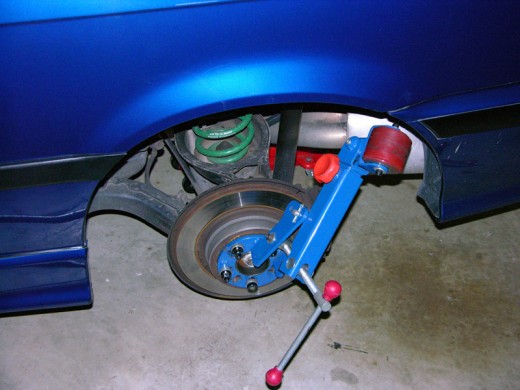
Backspacing
However, do not fear if you wish to upgrade to wider wheels! Most cars have space on the inside where a wider wheel can find a safe home without rubbing any suspension components. The distance from the hub where your wheel bolts on to your car to the inner edge of the wheel is known as the "backspacing." Most cars, especially rear-wheel drive cars, have at least a few inches of space on the inside side of the wheel (towards the brakes and suspension). Measuring this space is more involved than it seems, since you will have to take into account the diameter of your wheels and make sure you can make 360 degree rotations without hitting any of your chassis components under a variety of suspension travel ranges. Some professional shops have tools that simulate wheel backspacing and offset, but otherwise, you need to be careful and take into account all variables if you want wheels that do not hit or rub your car.
Mustang Mach 1 with GT500 wheels
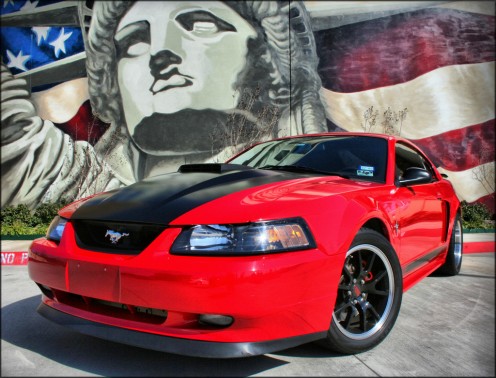
Offset
Offset is perhaps the most confusing thing about fitting aftermarket wheels. First of all, offset is measured from the centerline of the wheel, or the physical middle when looking at a wheel from above. The distance between this imaginary middle line and the part of the wheel that rests up against the hub when the wheel is bolted on is the offset. Positive offset means the hub is closer to the outside of the wheel relative to the centerline, and negative offset means the hub is closer to the inside of the wheel relative to the centerline. Offset is somewhat related to backspacing, but most aftermarket wheel manufacturers list offsets so it is important to know which offsets will fit your make and model of vehicle. Offsets, like wheel widths, can be researched by looking at other peoples' aftermarket wheel setups. Most shops that carry wheels will also be able to look up or measure offsets. Getting a good offset and width combination can make the difference between an amazing looking wheel setup and one that looks wrong and non-factory.
Backspacing and offset
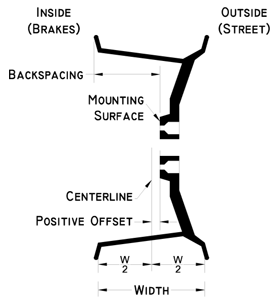
Wheel diameter
Last but not least, you must select your wheel diameter. This is the measurement everyone likes the best -- it determines how "big" your wheels are. Most factory wheels are around 15-16 inches in diameter, though newer cars are coming with larger and larger wheels straight off of the production line. Upgrading the size of your wheels generally looks good, but there are plusses and minuses to consider too. Ride quality is compromised with larger wheels, because there is less tire to absorb bumps in the road. Extremely large wheels are also prone to bends and chips when hitting potholes or road debris, and of course they weigh more so your handling and acceleration will be slightly worse.
A good size for both appearance and performance on the street is the 16-17 inch diameter range -- these wheels are relatively light, have a decent amount of tire sidewall height, and are big enough to stand out from factory wheels. Some cars and trucks/SUVs go for gigantic sizes, such as 20 inches and higher, but most of the time these vehicle owners are not looking for performance. Off-road vehicles sometimes change wheels to extremely wide but small diametered models to accommodate large tires for mud, rock, and dirt performance. There is no need to worry! Whatever your goals are, there are usually wheel diameters that fit your needs.
Volk GT-C
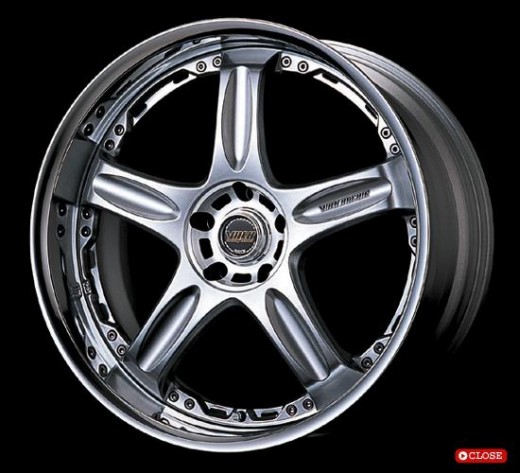
Price
Another important factor to consider is the price of aftermarket wheels. It would be nice to get custom made wheels with exactly the right diameter, offset, and style to fit your car, but most of the time these wheels are in the upper thousands in terms of cost. Cheap wheels can be had from no-name or lower quality companies, but these generally are not as durable and sometimes can even crack or break under heavy driving conditions! It is best to go with at least a proven and established manufacturer of wheels to avoid accidents like this; however, top-dollar racing wheels are not required for normal use. There are tons of styles and sizes of aftermarket wheels on the market for all budgets, ranging from as low as $400 a set to $6000+!
The two main types of wheels are forged and cast/spun. Most aftermarket wheels are cast or spun from aluminum alloys or similar materials, and these are actually not bad at all. A good quality cast/spun wheel will work just fine! Forged wheels are formed in high temperatures and while manufacturers' techniques vary, the goal is to keep the metal atoms close together to gain exceptional strength and light weight. Forged wheels generally cost a good bit more than cast wheels, and there are some hybrid manufacturing processes out there that combine both techniques to better balance cost and performance.
WRX with aftermarket wheels
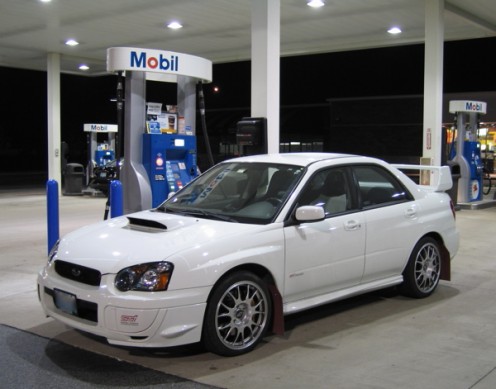
Tires
As a last note, I will briefly talk about tires. When changing the diameter or width of your wheels by replacing them with aftermarket ones, new tires are needed. Tire sizing is another in-depth subject that would take a whole other article to cover, but the basic idea is to keep your overall tire/wheel diameter the same as it was from the factory to keep your speedometer and odometer working properly. Tire and wheel shops know how to calculate tire sizes, and finding new tires is not a hard thing to do unless you go with extremely strange wheel sizes like a 24 inch diameter with only 6 inches of width. Just remember, keep the overall diameter the same and everything will be fine!
SEMA 2007- Hot Wheels
Ignite Soul: racing, drifting, and cool stickers!
- Ignite Soul: "Fueled by passion because dollars are unavailable"
The story of a couple of car enthusiasts from the southeast United States who love to race, drift, and otherwise beat on their vehicles. Bro, did I broverhear you like to broversteer?!
